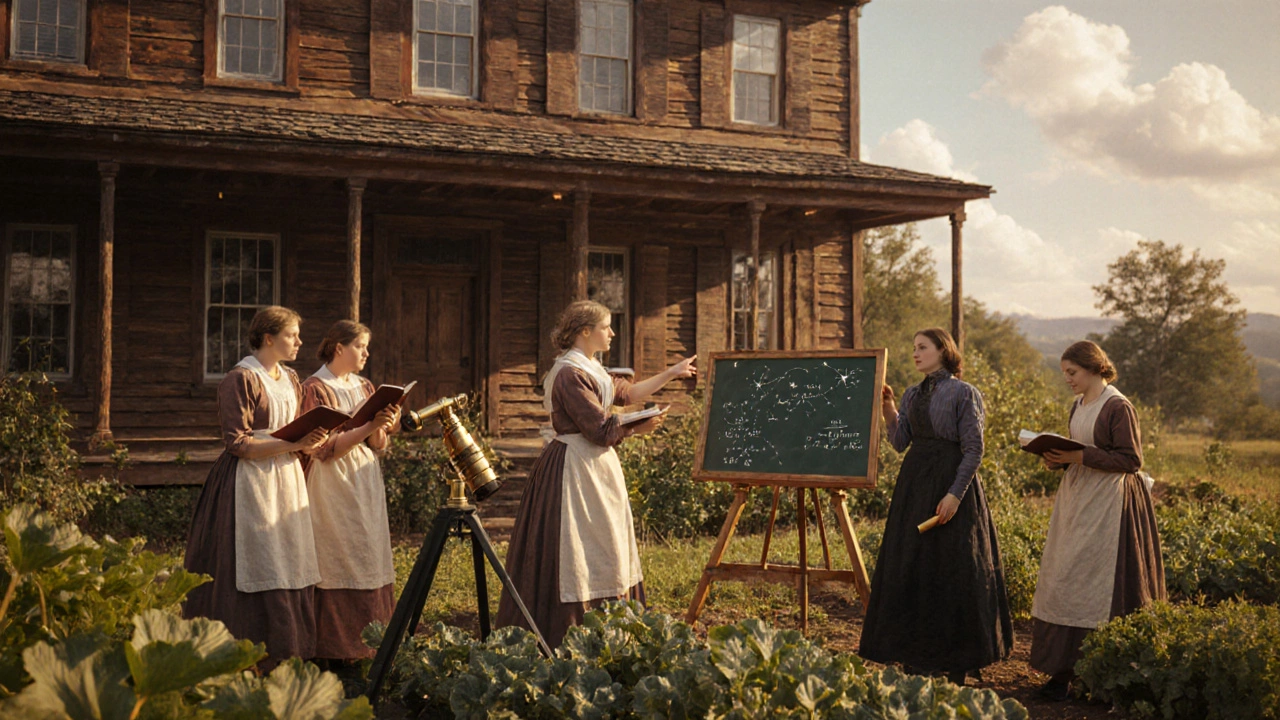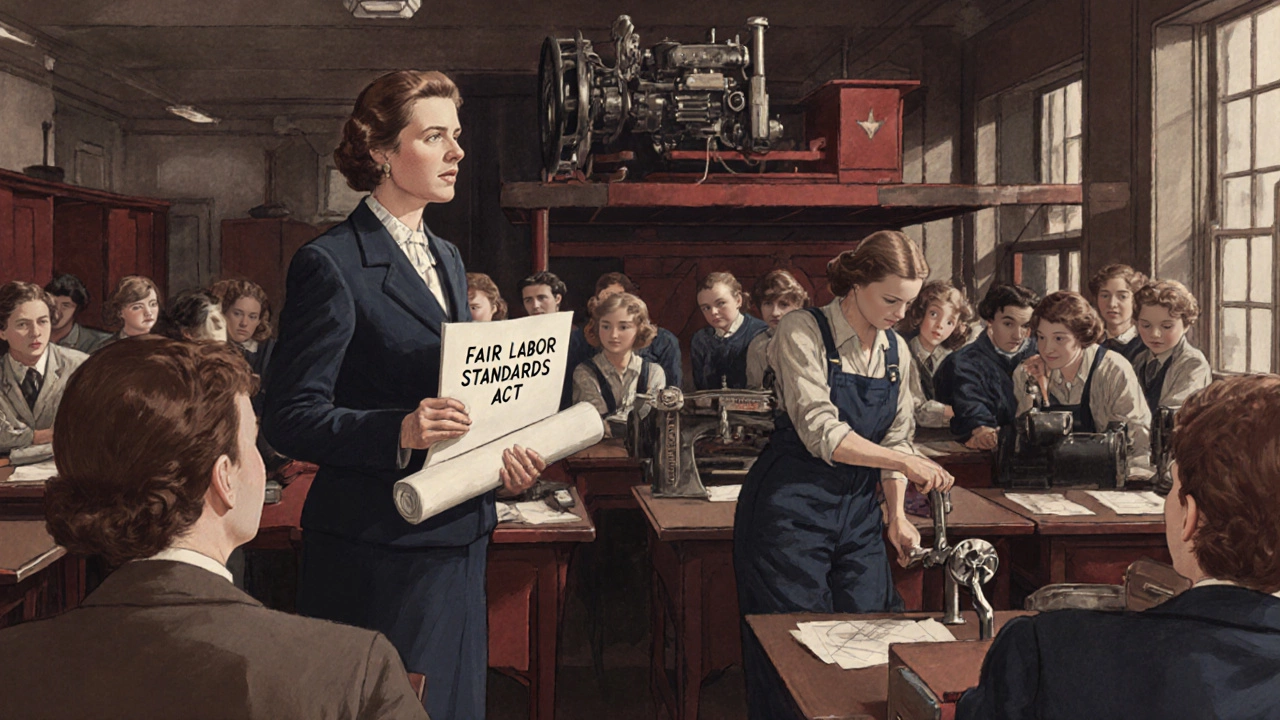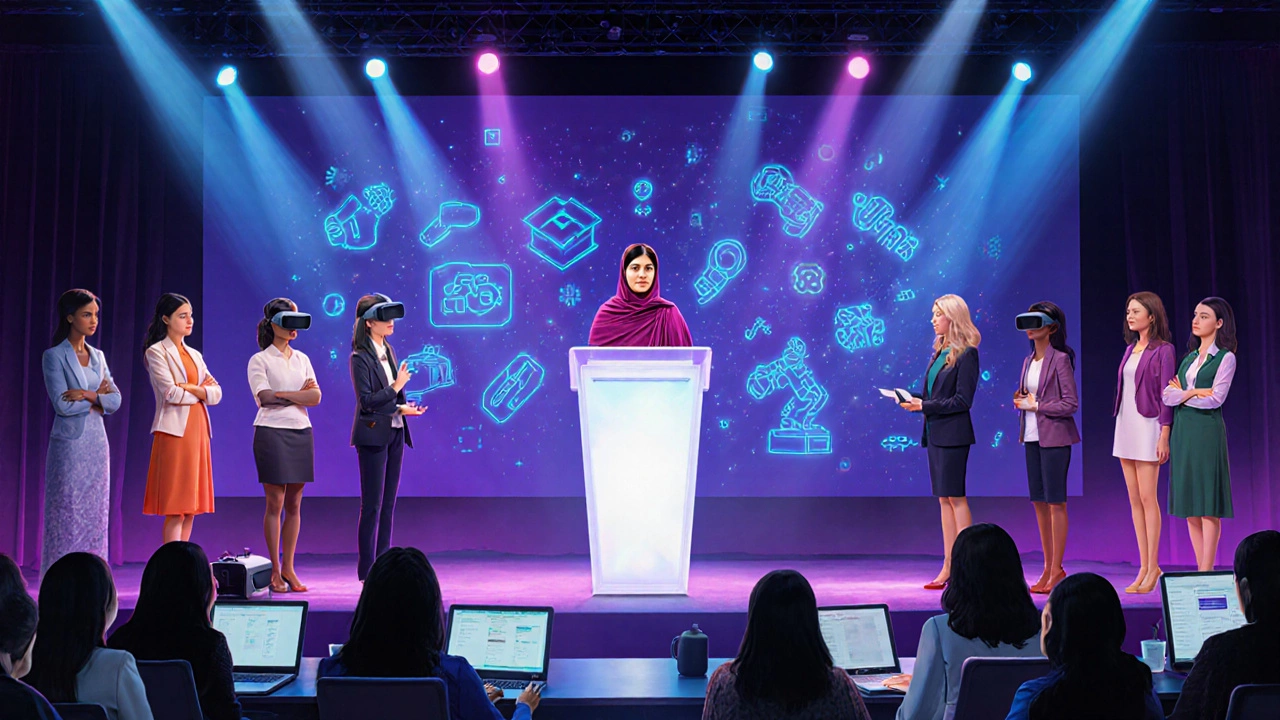Key Figures Who Championed Vocational Training for Women
 Oct, 14 2025
Oct, 14 2025
When we talk about vocational training for women, the question isn’t just “what” or “how” - it’s also “who”. Across centuries, a mix of educators, reformers, and policymakers have argued that women deserve practical skills, not just domestic lessons. Their stories show how a simple idea can reshape economies, families, and personal ambition.
Key Takeaways
- Mary Lyon and Emma Willard laid the 19th‑century groundwork by pairing academic rigor with hands‑on work.
- Florence Nightingale turned nursing into a respected profession, proving that gender‑specific training can achieve global impact.
- Frances Perkins and the U.S. Women’s Bureau made vocational training a federal priority during the New Deal.
- The UK’s Trades Union Congress helped embed skills programs for women in post‑war reconstruction.
- Modern champions like Malala Yousafzai keep the conversation alive, linking education to economic empowerment.
19th‑Century Foundations
In the early 1800s, most societies still viewed women’s work as limited to home‑making. A few visionaries saw a broader horizon.
Mary Lyon founded Mount Holyoke Female Seminary in 1837, insisting that students learn both literature and practical subjects like mathematics, astronomy, and even farm work. Her model combined rigorous academics with vocational chores, arguing that “skill and knowledge together make a woman truly independent.”
Just a few years later, Emma Willard opened the Troy Female Seminary, where she introduced courses in nursing, dressmaking, and bookkeeping. Willard believed that if women could earn a living, they would gain social standing and financial security.
Pioneering Professional Training
While Lyon and Willard focused on education, the mid‑19th century saw the rise of formal professional training.
Florence Nightingale revolutionized nursing after her Crimean War experience. She established the Nightingale School of Nursing in 1860, turning what was once an informal caretaking role into a recognized, skill‑based profession. Nightingale’s curriculum emphasized sanitation, anatomy, and record‑keeping - a clear blueprint for modern vocational programs.

Policy Champions of the Early 20th Century
When industrialization demanded a new workforce, governments began to act.
Frances Perkins, the first female U.S. Secretary of Labor, introduced the 1938 Fair Labor Standards Act, which included provisions for women’s apprenticeships and reduced wage discrimination. Perkins argued that “training women for skilled trades strengthens the nation’s economic backbone.”
The Women’s Bureau of the U.S. Department of Labor, created in 1920, launched the “Vocational Training for Women” program during the New Deal. The initiative funded sewing workshops, clerical courses, and later, automotive mechanics classes, opening doors for women in traditionally male‑dominated trades.
Across the Atlantic, the British Trades Union Congress (TUC) pushed for post‑World‑II apprenticeship schemes that welcomed women into engineering, plumbing, and electrical work. By the 1950s, TUC‑backed programs placed thousands of women in skilled positions, reshaping the UK labor market.
Modern Advocates
Today, the conversation has broadened to include global advocacy.
Malala Yousafzai has repeatedly highlighted that education must go beyond the classroom. While she is best known for championing girls’ primary education, her speeches frequently link literacy to vocational pathways, insisting that “skill training turns education into real‑world power.”
Other contemporary voices - from former First Lady Michelle Obama’s “Let Girls Learn” initiative to tech‑industry leaders funding coding bootcamps for women - echo the same message: practical skills are a catalyst for equality.
Comparative Overview of Key Proponents
| Era | Proponent | Key Contribution | Impact |
|---|---|---|---|
| 1800‑1850 | Mary Lyon | Integrated farm work and industrial arts into women’s seminary curriculum | Set a precedent for blended academic‑vocational education |
| 1800‑1850 | Emma Willard | Introduced nursing, bookkeeping, and dressmaking courses | Provided women with marketable skills for emerging middle‑class jobs |
| 1850‑1900 | Florence Nightingale | Founded the first professional nursing school | Professionalized a gender‑dominant field and created a global standards model |
| 1930‑1960 | Frances Perkins | Implemented federal apprenticeship and training standards for women | Legalized equal pay for skilled women workers in the U.S. |
| 1930‑1960 | Women’s Bureau (U.S.) | Funding of vocational workshops and apprenticeship programs | Thousands of women entered manufacturing and clerical trades during WWII |
| 1940‑1970 | Trades Union Congress (UK) | Negotiated inclusion of women in post‑war apprenticeship schemes | Raised female participation in engineering and technical trades to 15% by 1970 |
| 2000‑present | Malala Yousafzai | Advocated for linking girls’ education to skill‑based training worldwide | Inspired policy shifts in over 30 countries to fund women‑focused vocational programs |

Practical Lessons for Today’s Programs
What can modern educators and policymakers learn from this lineage? Here are three actionable points:
- Blend theory with practice. The success of Mount Holyoke and Nightingale shows that students retain knowledge better when it’s tied to real‑world tasks.
- Secure public‑private partnerships. Frances Perkins proved that government backing can scale training; today’s tech companies can replicate that model for coding bootcamps.
- Center advocacy on economic outcomes. Malala’s message that skills turn education into power resonates with employers looking for immediate ROI.
By weaving these principles into curricula, we can keep the momentum of the past alive and make sure that vocational training for women remains a cornerstone of economic equity.
Frequently Asked Questions
Why was vocational training historically important for women?
It gave women financial independence, expanded their social roles, and helped economies adapt to industrialization.
Who were the first educators to combine academic and vocational subjects?
Mary Lyon and Emma Willard pioneered this blend in the 1830s and 1840s, respectively.
How did government policy influence women’s vocational training in the 20th century?
Legislation by Frances Perkins and programs run by the Women’s Bureau institutionalized apprenticeships and set wage standards, dramatically increasing women’s participation in skilled trades.
What modern movements continue the legacy of early advocates?
Initiatives like Malala’s education campaigns, tech bootcamps aimed at women, and government‑backed upskilling funds echo the same belief that skill‑based learning unlocks opportunity.
How can a small community college start a women‑focused vocational program?
Begin with a needs assessment, partner with local employers, secure modest grants, and embed hands‑on labs alongside classroom theory - a formula proven successful since the 19th century.
Next Steps
If you’re a school administrator, start by mapping local industry demand and reaching out to potential mentors. For policymakers, review past legislation - the New Deal’s training act offers a solid template. And if you’re an individual learner, look for community workshops or online bootcamps that blend theory with real projects. The lineage of supporters shows that when practical skill meets purpose, change follows.